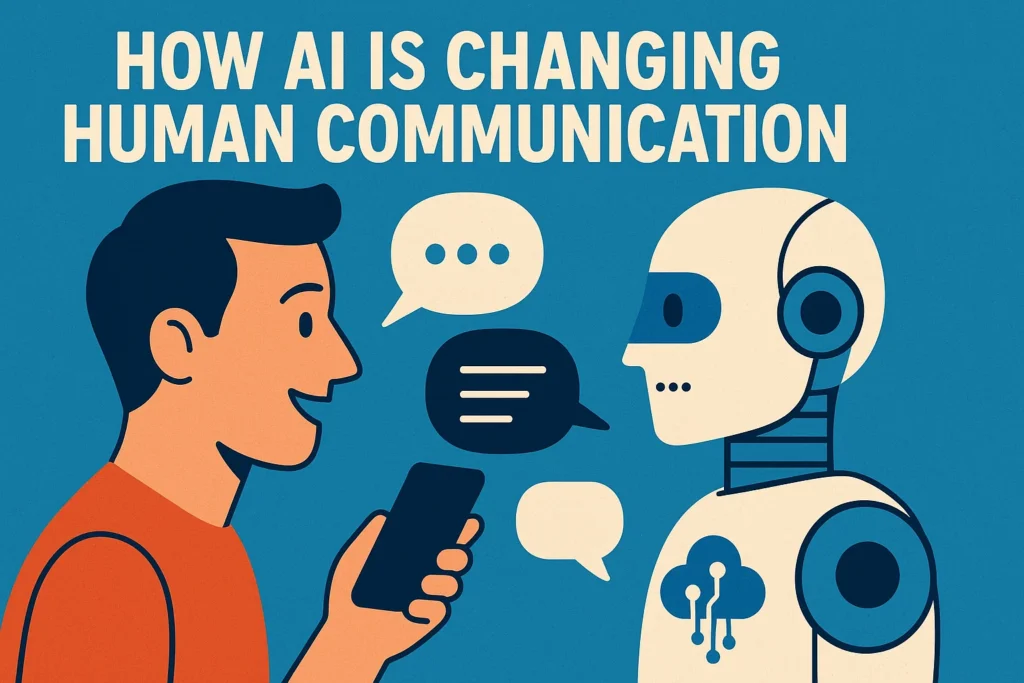🌟 Introduction
AI BlogQuest.com explores the fascinating ways artificial intelligence is reshaping the way we talk, connect, and share ideas. From chatbots to virtual assistants, AI is no longer just a tool—it has become a partner in communication. But how exactly is AI human communication evolving, and what does it mean for our future interactions? Let’s dive deep.
🔑 7 Ways AI Is Changing Human Communication
1. 🗣️ Real-Time Language Translation
AI-powered translators break barriers, allowing people from different linguistic backgrounds to converse seamlessly.
2. 🤖 Chatbots & Virtual Assistants
Customer service, healthcare, and even education are adopting AI-driven conversations for quick, reliable communication.
3. 🎙️ Voice Interfaces
Voice-enabled AI assistants like Siri or Alexa make interaction more natural, moving us away from screens and keyboards.
4. 💬 Personalized Messaging
AI tailors communication based on behavior, making messages more relevant and impactful.
5. 🧠 Emotional Analysis
AI tools now attempt to detect tone, mood, and sentiment, bringing empathy into digital interactions.
6. 🌐 Global Collaboration
Remote teams use AI-driven tools for smarter collaboration, bridging cultural and geographic gaps.
7. ⚖️ Ethics & Dependency Concerns
As AI grows, concerns about privacy, bias, and over-dependence highlight the need for balance.
💡 Future of AI Human Communication
The future isn’t about AI replacing human communication but enhancing it. As systems become more context-aware and emotionally intelligent, AI may help humans communicate across deeper and broader dimensions.
🔗 Useful Links – AiBlogQuest.com
❓ FAQs
Q1. Will AI replace human communication?
No, AI is designed to support and enhance, not replace, human communication.
Q2. Can AI understand emotions in conversations?
AI can detect sentiment but still struggles with deep emotional understanding.
Q3. How does AI impact global collaboration?
It enables real-time translation and smarter teamwork across borders.



